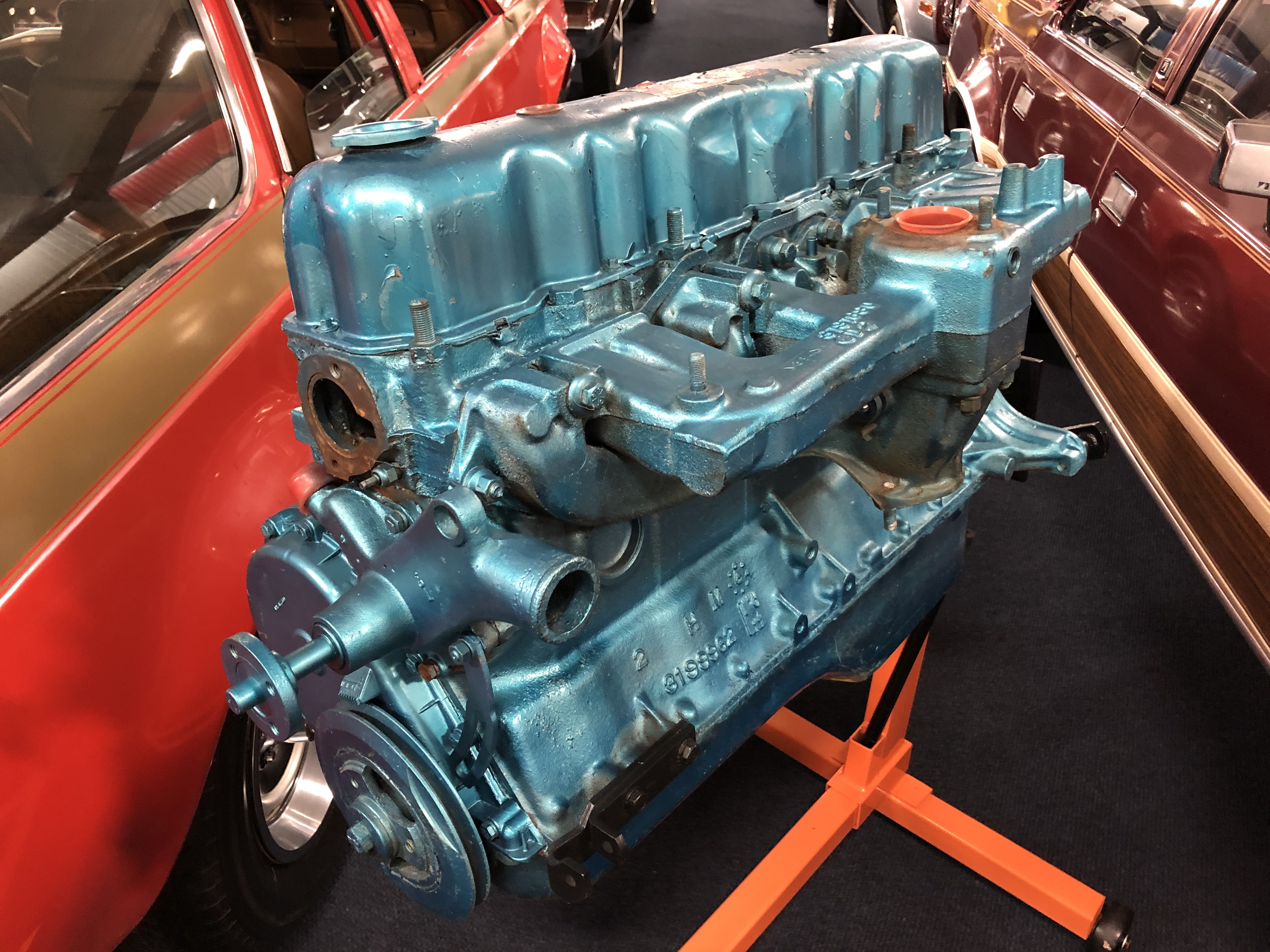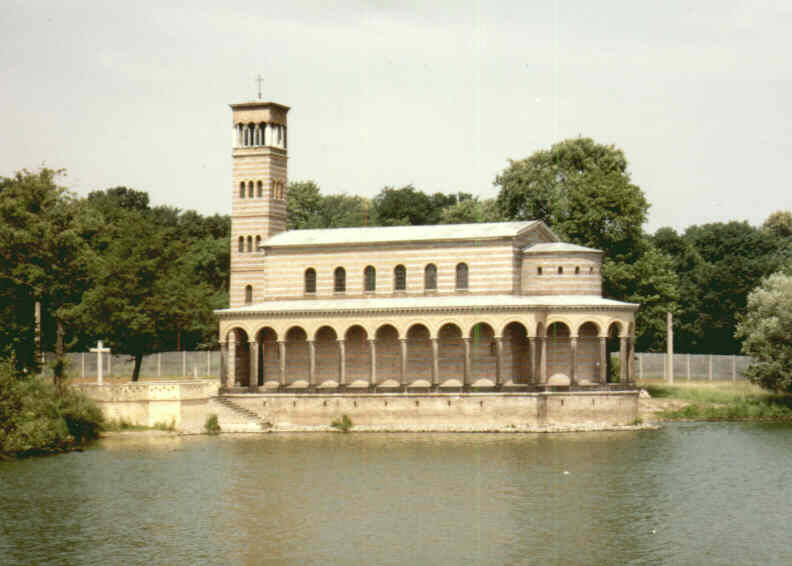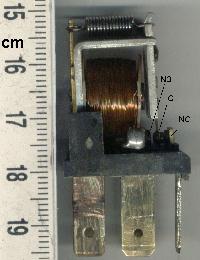|
Adolf Slaby
Adolf Karl Heinrich Slaby (18 April 1849 – 6 April 1913) was a German electronics pioneer and the first Professor of electro-technology at the Technical University of Berlin (1886). Education Slaby was born in Berlin, the son of a bookbinder. He studied at the Berlin Trade Academy, the predecessor of Berlin-Charlottenburg Technical Academy to study mechanical engineering and mathematics under Franz Reuleaux. He was employed as a housekeeper with the machine manufacturer Louis Schwartzkopff, leading to an interest in mechanical engineering. Slaby continued his studies at the University of Jena, and received his doctorate in mathematics. Early research Slaby taught mathematics and mechanics at a vocational school at Potsdam, where he conducted experiments on steam engines and petrol engines. He wrote his book ''Theorie der Gasmaschinen'' (Theory of Gas Engines), which had an important part in the development of Internal combustion engines. Slaby also studied with Heinri ... [...More Info...] [...Related Items...] OR: [Wikipedia] [Google] [Baidu] |
Adolf Slaby By Nicola Perscheid
Adolf (also spelt Adolph or Adolphe, Adolfo and when Latinised Adolphus) is a given name used in German-speaking countries, Scandinavia, the Netherlands and Flanders, France, Italy, Spain, Portugal, Latin America and to a lesser extent in various Central European and East European countries with non-Germanic languages, such as Lithuanian Adolfas and Latvian Ādolfs. Adolphus can also appear as a surname, as in John Adolphus, the English historian. The female forms Adolphine and Adolpha are far more rare than the male names. The name is a compound derived from the Old High German ''Athalwolf'' (or ''Hadulf''), a composition of ''athal'', or ''adal'', meaning "noble" (or '' had(u)''-, meaning "battle, combat"), and ''wolf''. The name is cognate to the Anglo-Saxon name '' Æthelwulf'' (also Eadulf or Eadwulf). The name can also be derived from the ancient Germanic elements "Wald" meaning "power", "brightness" and wolf (Waldwulf). Due to negative associations with Adolf Hitl ... [...More Info...] [...Related Items...] OR: [Wikipedia] [Google] [Baidu] |
Petrol Engine
A petrol engine (gasoline engine in American English) is an internal combustion engine designed to run on petrol (gasoline). Petrol engines can often be adapted to also run on fuels such as liquefied petroleum gas and ethanol blends (such as ''E10'' and ''E85''). Most petrol engines use spark ignition, unlike diesel engines which typically use compression ignition. Another key difference to diesel engines is that petrol engines typically have a lower compression ratio. Design Thermodynamic cycle Most petrol engines use either the four-stroke Otto cycle or the two-stroke cycle. Petrol engines have also been produced using the Miller cycle and Atkinson cycle. Layout Most petrol-powered piston engines are straight engines or V engines. However, flat engines, W engines and other layouts are sometimes used. Wankel engines are classified by the number of rotors used. Compression ratio Cooling Petrol engines are either air-cooled or water-cooled. Ignitio ... [...More Info...] [...Related Items...] OR: [Wikipedia] [Google] [Baidu] |
Church Of The Redeemer, Sacrow
The Protestant Church of the Redeemer (german: Heilandskirche, la, S. Ecclesiae sanctissimi Salvatoris in portu sacro) is located to the south of the village of ''Sacrow'', which since 1939 has been incorporated to Potsdam, the capital of the German Bundesland of Brandenburg. It is famous for its Italian Romanesque Revival architecture with a separate campanile (bell tower) and for its scenic location. It was built in 1844. The design was based on drawings by King Frederick William IV of Prussia, called the ''Romantic on the Throne''. The building was realized by Ludwig Persius, the king's favorite architect. In 1992, the church along with the park and Sacrow Manor was added by UNESCO to the World Heritage Site "Palaces and Parks of Potsdam and Berlin" for its architecture and cohesion with the surrounding park. Location The church is situated on the bank of lake Jungfernsee, a part of the river Havel, 300 metres south of ''Sacrow Manor'' at the edge of its park, designed a ... [...More Info...] [...Related Items...] OR: [Wikipedia] [Google] [Baidu] |
English Channel
The English Channel, "The Sleeve"; nrf, la Maunche, "The Sleeve" ( Cotentinais) or (Jèrriais), ( Guernésiais), "The Channel"; br, Mor Breizh, "Sea of Brittany"; cy, Môr Udd, "Lord's Sea"; kw, Mor Bretannek, "British Sea"; nl, Het Kanaal, "The Channel"; german: Ärmelkanal, "Sleeve Channel" (French: ''la Manche;'' also called the British Channel or simply the Channel) is an arm of the Atlantic Ocean that separates Southern England from northern France. It links to the southern part of the North Sea by the Strait of Dover at its northeastern end. It is the busiest shipping area in the world. It is about long and varies in width from at its widest to at its narrowest in the Strait of Dover."English Channel". ''The Columbia Encyclopedia'', 2004. It is the smallest of the shallow seas around the continental shelf of Europe, covering an area of some . The Channel was a key factor in Britain becoming a naval superpower and has been utilised by Britain as a natural d ... [...More Info...] [...Related Items...] OR: [Wikipedia] [Google] [Baidu] |
Guglielmo Marconi
Guglielmo Giovanni Maria Marconi, 1st Marquis of Marconi (; 25 April 187420 July 1937) was an Italian inventor and electrical engineer, known for his creation of a practical radio wave-based wireless telegraph system. This led to Marconi being credited as the inventor of radio, and he shared the 1909 Nobel Prize in Physics with Karl Ferdinand Braun "in recognition of their contributions to the development of wireless telegraphy".Guglielmo Marconi: The Nobel Prize in Physics 1909 . nobelprize.org Marconi was also an entrepreneur, businessman, and founder of The Wireless Telegraph & Signal Company in the |
Georg Graf Von Arco
Georg Wilhelm Alexander Hans Graf von Arco (30 August 1869 in Großgorschütz – 5 May 1940 in Berlin) was a German physicist, radio pioneer, and one of the joint founders of the "''Society for Wireless Telegraphy''" which became the Telefunken company. He was an engineer and the technical director of Telefunken. He was crucial in the development of wireless technology in Europe. Arco served for a time as an assistant to Adolf Slaby, who was close to William II, German Emperor. Until 1930, Arco was one of the two managing directors of the company. He participated in the development of high performance tube transmitters. Together with his teacher, Slaby, he was considerably involved in the study and development of high-frequency engineering in Germany. He was a Monist and a pacifist. Between 1921-22, he was a chairman of the German Monist Federation. Early years Arco was born on the estate of his father, Count Alexander Karl von Arco, in Großgorschütz, Upper Silesia, P ... [...More Info...] [...Related Items...] OR: [Wikipedia] [Google] [Baidu] |
William Henry Preece
Sir William Henry Preece (15 February 1834 – 6 November 1913) was a Welsh electrical engineer and inventor. Preece relied on experiments and physical reasoning in his life's work. Upon his retirement from the Post Office in 1899, Preece was made a Knight Commander of the Order of the Bath (KCB) in the 1899 Birthday Honours. Biography Preece was born in Caernarfon (Gwynedd), Wales. He was educated at King's College School and King's College London. Preece studied at the Royal Institution in London (Great Britain) under Michael Faraday. He later was the consulting engineer for the Post Office (1870s). He became Engineer-in-Chief of the British General Post Office in 1892. He developed several improvements in railroad signalling system that increased railway safety. Preece and Oliver Lodge maintained a correspondence during this period. Upon Lodge's proposal of "loading coils" applied to submerged cables, Preece did not realise that "Earthing" would extend the distance and eff ... [...More Info...] [...Related Items...] OR: [Wikipedia] [Google] [Baidu] |
Charlottenburg Technical Academy
Charlottenburg () is a locality of Berlin within the borough of Charlottenburg-Wilmersdorf. Established as a town in 1705 and named after Sophia Charlotte of Hanover, Queen consort of Prussia, it is best known for Charlottenburg Palace, the largest surviving royal palace in Berlin, and the adjacent museums. Charlottenburg was an independent city to the west of Berlin until 1920 when it was incorporated into " Groß-Berlin" (Greater Berlin) and transformed into a borough. In the course of Berlin's 2001 administrative reform it was merged with the former borough of Wilmersdorf becoming a part of a new borough called Charlottenburg-Wilmersdorf. Later, in 2004, the new borough's districts were rearranged, dividing the former borough of Charlottenburg into the localities of Charlottenburg proper, Westend and Charlottenburg-Nord. Geography Charlottenburg is located in Berlin's inner city, west of the Großer Tiergarten park. Its historic core, the former village green of Alt Lietz ... [...More Info...] [...Related Items...] OR: [Wikipedia] [Google] [Baidu] |
Tenure
Tenure is a category of academic appointment existing in some countries. A tenured post is an indefinite academic appointment that can be terminated only for cause or under extraordinary circumstances, such as financial exigency or program discontinuation. Tenure is a means of defending the principle of academic freedom, which holds that it is beneficial for society in the long run if scholars are free to hold and examine a variety of views. By country United States and Canada Under the tenure systems adopted by many universities and colleges in the United States and Canada, some faculty positions have tenure and some do not. Typical systems (such as the widely adopted "1940 Statement of Principles on Academic Freedom and Tenure" of the American Association of University Professors) allow only a limited period to establish a record of published research, ability to attract grant funding, academic visibility, teaching excellence, and administrative or community service. The ... [...More Info...] [...Related Items...] OR: [Wikipedia] [Google] [Baidu] |
Electromechanics
In engineering, electromechanics combines processes and procedures drawn from electrical engineering and mechanical engineering. Electromechanics focuses on the interaction of electrical and mechanical systems as a whole and how the two systems interact with each other. This process is especially prominent in systems such as those of DC or AC rotating electrical machines which can be designed and operated to generate power from a mechanical process ( generator) or used to power a mechanical effect ( motor). Electrical engineering in this context also encompasses electronics engineering. Electromechanical devices are ones which have both electrical and mechanical processes. Strictly speaking, a manually operated switch is an electromechanical component due to the mechanical movement causing an electrical output. Though this is true, the term is usually understood to refer to devices which involve an electrical signal to create mechanical movement, or vice versa mechanical moveme ... [...More Info...] [...Related Items...] OR: [Wikipedia] [Google] [Baidu] |
Telegraphy
Telegraphy is the long-distance transmission of messages where the sender uses symbolic codes, known to the recipient, rather than a physical exchange of an object bearing the message. Thus flag semaphore is a method of telegraphy, whereas pigeon post is not. Ancient signalling systems, although sometimes quite extensive and sophisticated as in China, were generally not capable of transmitting arbitrary text messages. Possible messages were fixed and predetermined and such systems are thus not true telegraphs. The earliest true telegraph put into widespread use was the optical telegraph of Claude Chappe, invented in the late 18th century. The system was used extensively in France, and European nations occupied by France, during the Napoleonic era. The electric telegraph started to replace the optical telegraph in the mid-19th century. It was first taken up in Britain in the form of the Cooke and Wheatstone telegraph, initially used mostly as an aid to railway signallin ... [...More Info...] [...Related Items...] OR: [Wikipedia] [Google] [Baidu] |
Habilitation
Habilitation is the highest university degree, or the procedure by which it is achieved, in many European countries. The candidate fulfills a university's set criteria of excellence in research, teaching and further education, usually including a dissertation. The degree, abbreviated "Dr. habil." (Doctor habilitatus) or "PD" (for "Privatdozent"), is a qualification for professorship in those countries. The conferral is usually accompanied by a lecture to a colloquium as well as a public inaugural lecture. History and etymology The term ''habilitation'' is derived from the Medieval Latin , meaning "to make suitable, to fit", from Classical Latin "fit, proper, skillful". The degree developed in Germany in the seventeenth century (). Initially, habilitation was synonymous with "doctoral qualification". The term became synonymous with "post-doctoral qualification" in Germany in the 19th century "when holding a doctorate seemed no longer sufficient to guarantee a proficient transfe ... [...More Info...] [...Related Items...] OR: [Wikipedia] [Google] [Baidu] |








